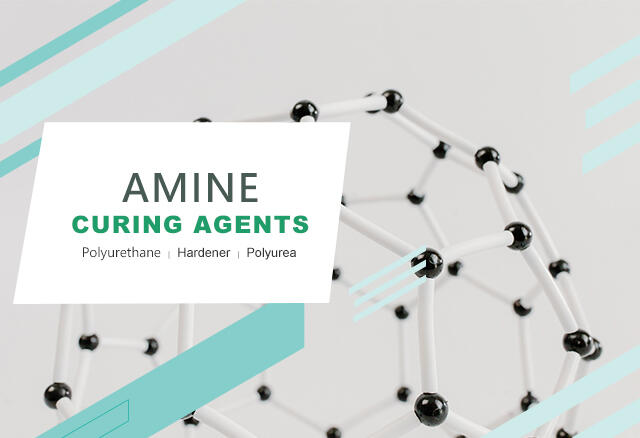HARTCURE 30 (DMTDA)
| Common Name: | DMTDA |
| Similar Name: | Dimethyl thio-toluene diamine |
| Molecular Formula: | C9H12N2 S2 |
| CAS Number: | 106264-79-3 |
HARTCURE 30 is a liquid-type aromatic diamine curing agent and chain extender, specifically engineered for the fabrication of high-performance polyurethane/polyurea elastomers. It is particularly effective in applications demanding superior mechanical and dynamic properties. This product finds extensive usage across a spectrum of applications including PU wheels, casters, rollers, and elastomeric coatings. Notably, HARTCURE 30 distinguishes itself by its eco-friendliness, non-toxic nature, and inherent safety features. During processing, it does not emit any toxic dust, smoke, or vapors, significantly reducing health risks compared to traditional hardeners while maintaining outstanding physical and mechanical properties.
Packing
25 kg/iron drum
200 kg/iron drum
It can be packaged on demand. Please inquire.
HARTCUR 30 / DMTDA is used as PU curing agent. It can slow down the activity of "NH2" group, thus, to extend the pot life while casting.
Processing
DMTDA (Hartcure 30), being a liquid at room temperature result in a significant processing advantage in comparison of MOCA, melting down of solids is unnecessary. Also, its liquid form allows to process prepolymer at lower temperature than that of MOCA and without solidification during the mixing. DMTDA (Hartcure 30) has an equivalent weight of 107 compared to 133.5 of MOCA. This means that about 20% less by weight is required for a given prepolymer at the same stoichiometry.
e.g.:
Prepolymer (%NCO 4.1) | 100 Pts | 100 Pts |
MOCA (stoichiometry*95%) | 12.4 Pts | — |
DMTDA(stoichiometry*95%) | — | 9.9 Pts |
Total | 112.4 Pts | 109.9 Pts |
Comparing of Physical Properties of Prepolymer Cured with DMTDA & MOCA
The physical properties of prepolymer, both ether and ester types, when cured with DMTDA (Hartcure 30) curing agent, are comparable to those based with MOCA. As in MOCA curing system, physical properties are sensitive to the ration (stoichiometry) of curative to prepolymer. DMTDA (Hartcure 30) curative exhibition tolerance to stoichiomety variations similar to that of MOCA.
Low stoichiomety (80~90%) generally tends to maximize compression set resistance, while high stoichiomety (100-105%) tends to maximize tear strength and flex life. The best results for most application are obtained at about 95% stoichiometry. While cure conditions (temperature and times) are similar to those used with MOCA, DMTDA (Hartcure 30) curative requires closer attention to post cure conditions to obtain maximum physical properties, particularly for compression set and dynamic properties.
| Chemical Name | Dimethyl thio-toluene diamine |
| CAS No. | 106264-79-3 |
| Amine Value (mg KOH/g) | 530 mg KOH/g |
| Molecular Weight (g/mol) | 214.36 |
| Appearance | Light yellow liquid |
| Boiling Point (°C) | 353 |
| Density (g/cm3) | 1.21 g/cm3 at 20℃/68℉ |
| 1.18 g/cm3 at 60℃/140℉ | |
| 1.15 g/cm3 at 100℃/212℉ | |
| Viscosity, cPs | 690 at 20℃/68℉ |
| 22 at 60℃/140℉ | |
| 5 at 100℃/212℉ | |
| Equivalent Weight | 107 |
| Amine Value (mg KOH/g) | 536±10 mg KOH/g |
| TDA Content (%) | 1.0 max. |
| Moisture(%) | 0.1 max. |
| Vapor Pressure (mm Hg @20°C) | 0.6 |
| Purity (%) | 98 min |
| Package | 25 KGS/iron drum, 200 KGS/iron drum |
| Self Life | 6 months since production date |
Note: The specific gravity of DMTDA (Hartcure 30) is about 1.20g/cm3 at 21℃-33℃, whereas that of molten MOCA is 1.26 at 116℃. When delivering these two materials by volumetric pumps, we need to change the formula weight of MOCA to that of DMTDA (Hartcure 30) without changing meter-mixing machines.
- Polyurethane curing agent or chain extender
- Epoxy resin hardener
- Coatings with high strength, corrosion resistance, and
- waterproofing
- Industrial coatings for construction, maritime, and automotive application
- Adhesives


